In a nutshell
High-end HPTLC instruments for advanced analysis
At CAMAG, we specialize in providing world-class HPTLC instruments for accurate qualitative and quantitative analyses, designed to meet the highest standards of precision and reliability.
Our solutions empower laboratories across industries such as pharmaceuticals, food safety, environmental testing, and herbal drug analysis.
With Swiss-engineered technology and decades of expertise, CAMAG ensures that your analytical processes are efficient, accurate, and reproducible.
Explore our range of HPTLC instruments for qualitative and quantitative analyses and discover how they can elevate your laboratory’s performance.
-
High-precision separations
-
Versatile detection methods
-
Automated workflows
-
Adaptable for a variety of applications
-
Software-controlled by visionCATS
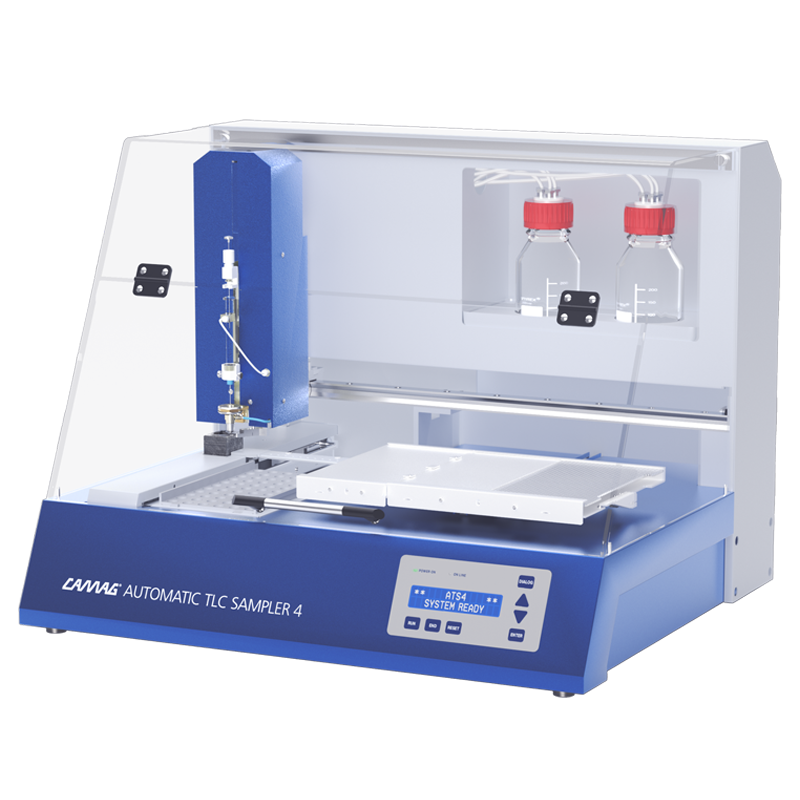
CAMAG® Automatic TLC Sampler 4 (ATS 4)
Automatic sample application is a key factor for productivity of the HPTLC laboratory. The ATS 4 offers fully automatic sample application for qualitative and quantitative analyses as well as for preparative separations. It is suited for routine use and high sample throughput.
-
Fully automated sample application
-
Application of bands, spots or rectangles
-
Software-controlled by visionCATS

CAMAG® Linomat 5
With the Linomat 5 samples are sprayed onto TLC/HPTLC plates in the form of bands with nitrogen or compressed air. Application is automatic, only changing the syringe (filling, inserting and rinsing) is manual. The Linomat 5 is suitable for small sample throughput.
-
Semi-automatic application
-
Application of spots or bands
-
Data input through visionCATS software or keypad
NEW
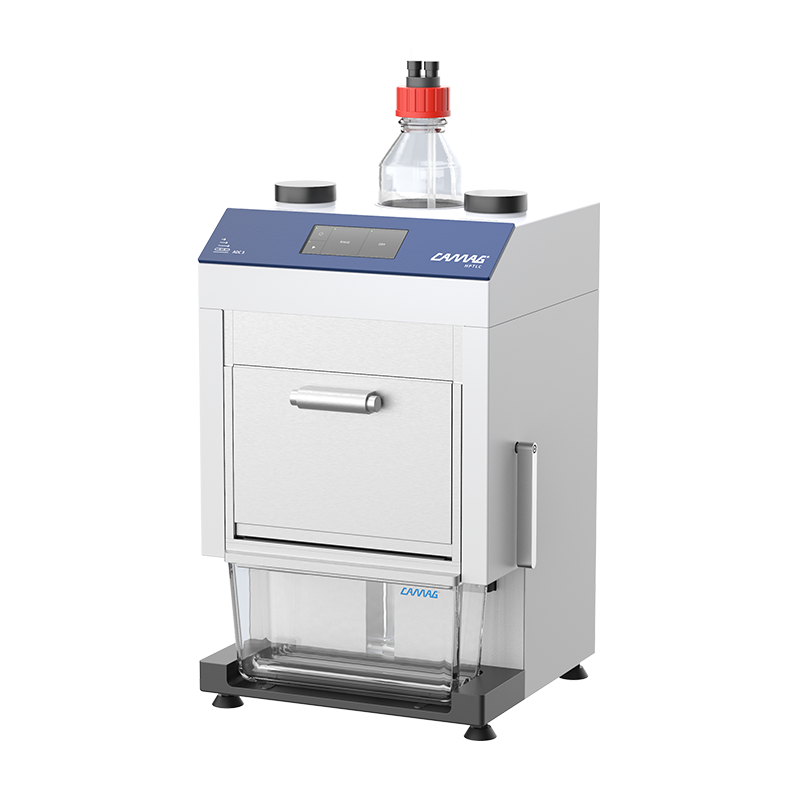
CAMAG® Automatic Developing Chamber 3 (ADC 3)
The ADC 3 offers convenience, safety, and reproducibility for isocratic developments of 20 x 10 cm HPTLC glass plates in full compliance with Ph. Eur. Chapter 2.8.25 and USP Chapter <203>.
-
Fully automated chromatogram development
-
Integrated Twin Trough Chamber (20 x 10 cm)
-
Built-in humidity control for enhanced reproducibility
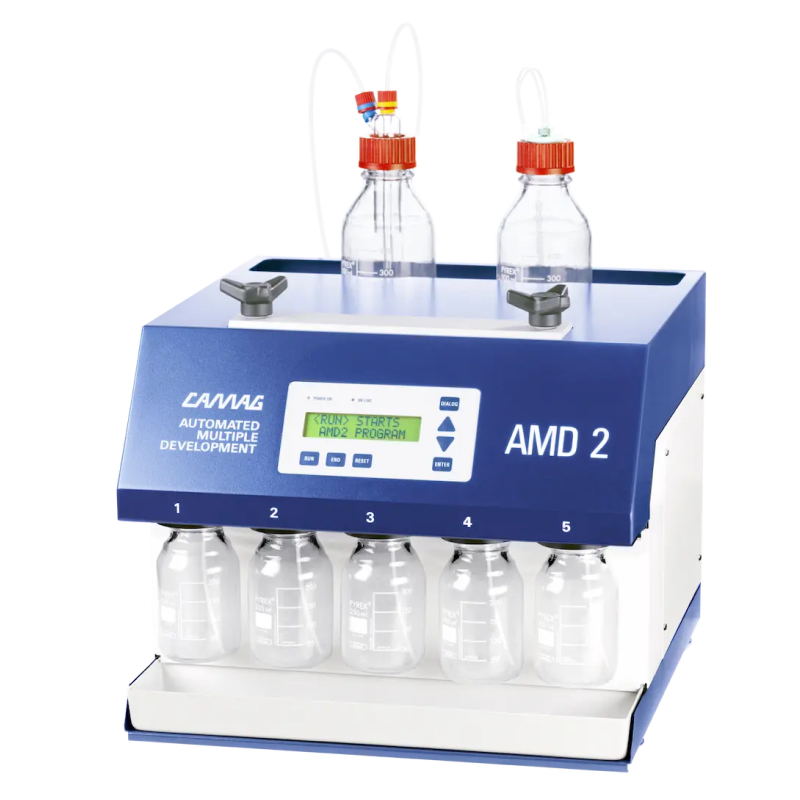
CAMAG® AMD 2 System Automated Multiple Development
The AMD 2 is a software-controlled HPTLC chamber for gradient development. It is used for difficult separation problems that cannot be solved by isocratic HPTLC.
-
Multiple development
-
Stepwise gradient elution over increasing separation distances
-
Enhanced separation capacity
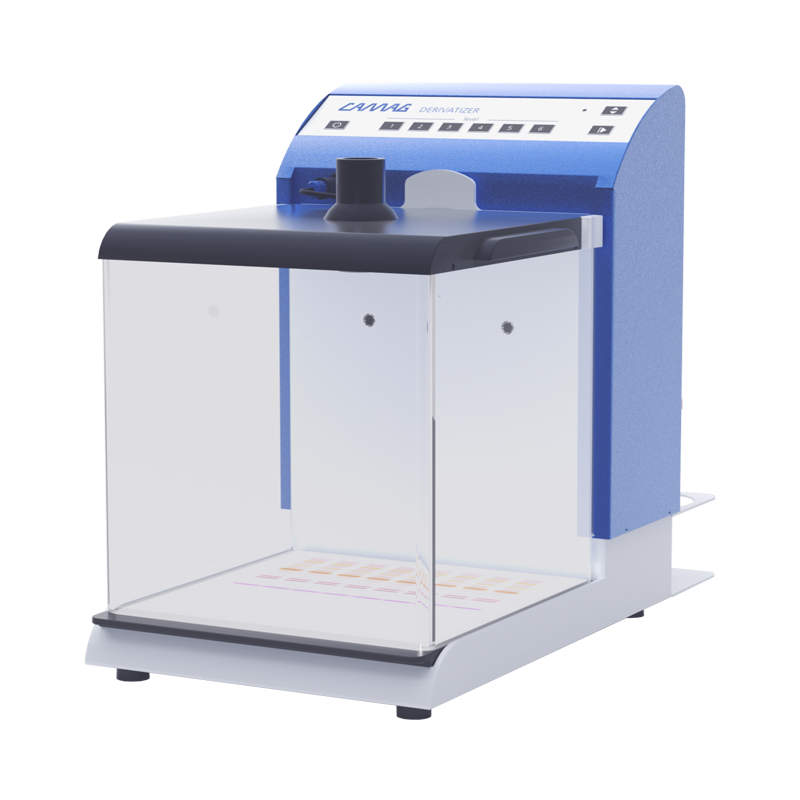
CAMAG® Derivatizer
The Derivatizer is used for automated reagent transfer in the derivatization of thin-layer chromatograms and sets a new standard of reproducibility by employing a unique “micro droplet” spraying technology (patented).
-
Unsurpassed homogeneous reagent distribution
-
Environmentally friendly and safe handling through a closed system
-
Low reagent consumption (2-4 mL)
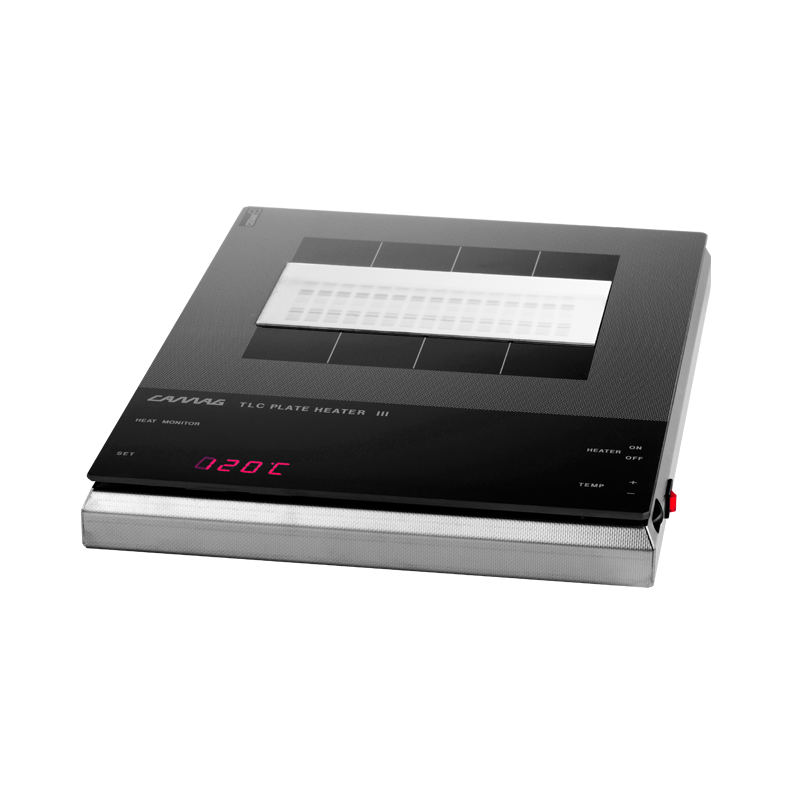
CAMAG® TLC Plate Heater 3
The TLC Plate Heater 3 is a device for heating TLC/HPTLC plates, permitting the optimal heating during the derivatization reaction. It features a NEXTREMA® heating surface which is resistant to all common reagents and is easily cleaned.
-
For uniform heating of TLC/HPTLC plates
-
Temperature selectable between 25 and 200 °C
-
NEXTREMA® heating surface (resistant to all common reagents)
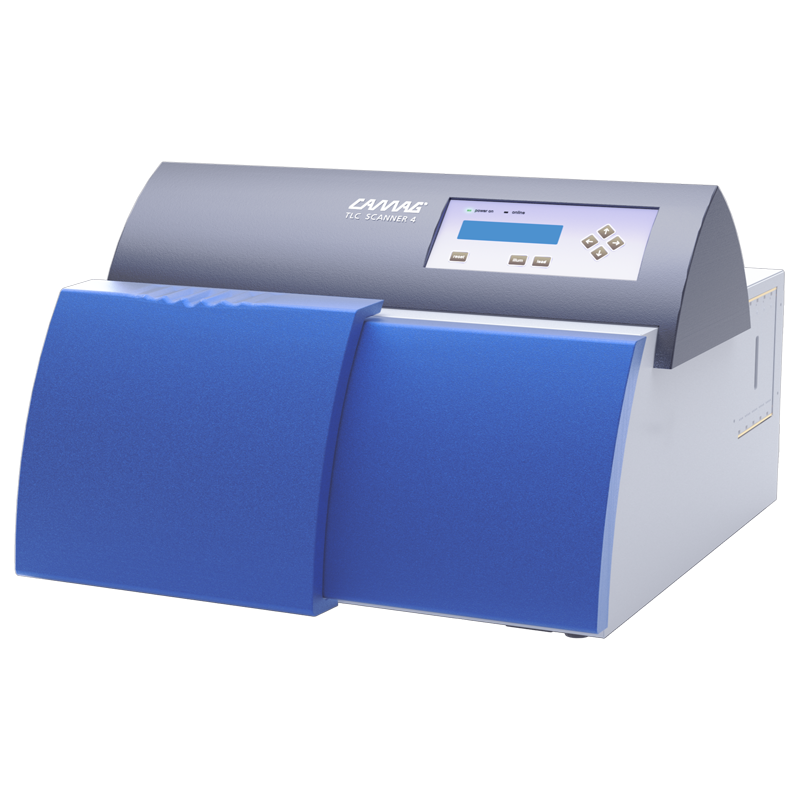
CAMAG® TLC Scanner 4
The TLC Scanner 4 is the most advanced workstation for densitometric evaluation of TLC/HPTLC chromatograms and other planar objects.
-
Measurement of reflection, either in absorbance and/or fluorescence
-
Spectral range from 190 to 900 nm
-
Data step resolution 25–200 μm
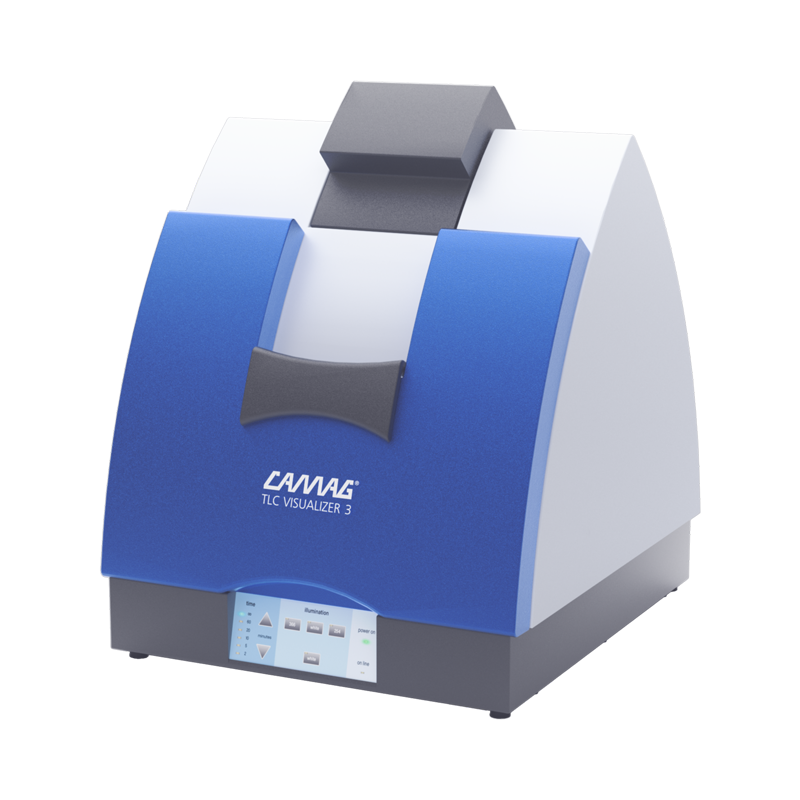
CAMAG® TLC Visualizer 3
The TLC Visualizer 3 is a high-end imaging and documentation system with superior performance in white light, long-wave UV (366 nm) and short-wave UV (254 nm) ensuring illumination with maximum homogeneity.
-
Maximum illumination homogeneity in white light, UV 366 nm and UV 254 nm
-
High-performance industrial camera with CMOS image sensor
-
Image-based evaluation
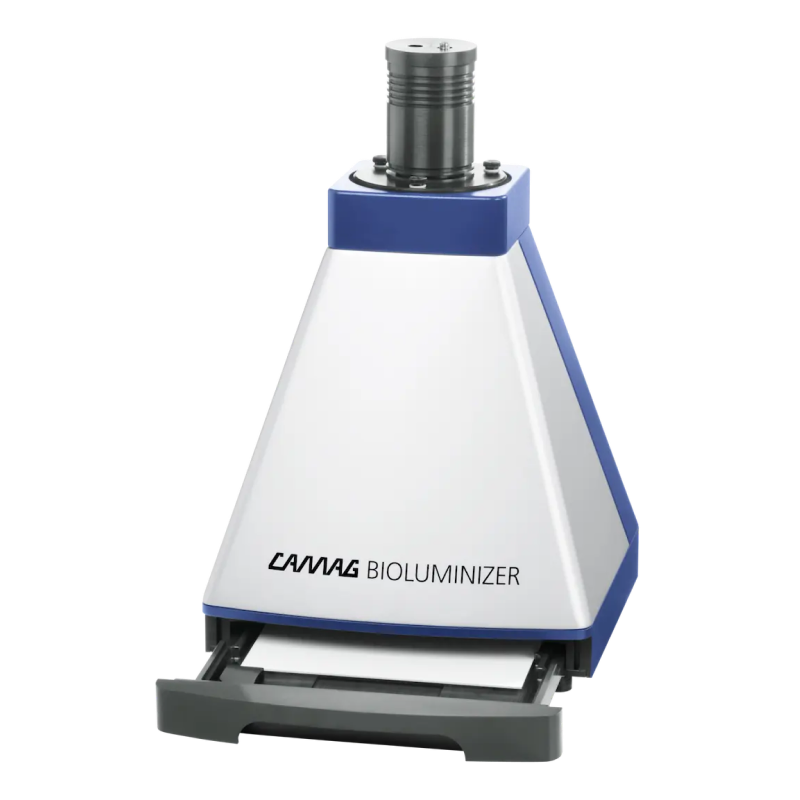
CAMAG® BioLuminizer® 2
The CAMAG® BioLuminizer® 2 is a compact and user-friendly documentation system for HPTLC plates. It captures images of light-emitting objects. With the help of luminescent bacteria, the presence of toxic substances in food and water samples can be monitored.
-
Cooled 16 bit CCD camera
-
Optimized plate compartment to keep bacteria moist
-
Small footprint
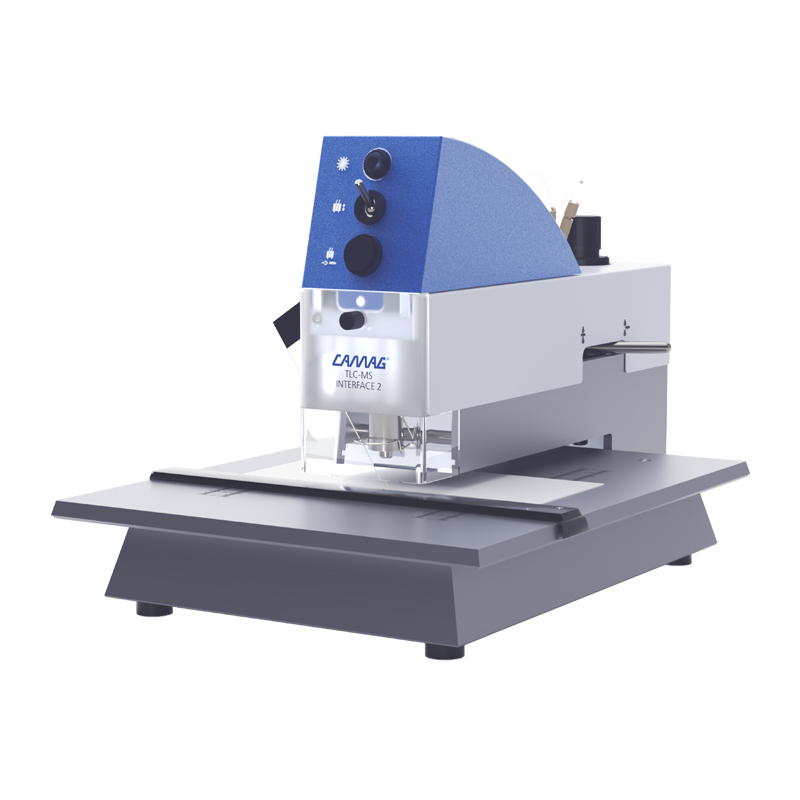
CAMAG® TLC MS-Interface 2
The TLC-MS Interface 2 enables users to directly analyze zones from TLC and HPTLC plates by Mass Spectrometry. A substance confirmation can be obtained in less than a minute.
-
Rapid and contamination-free elution of selected zones
-
Direct transfer to any mass spectrometer
-
Plug & play installation
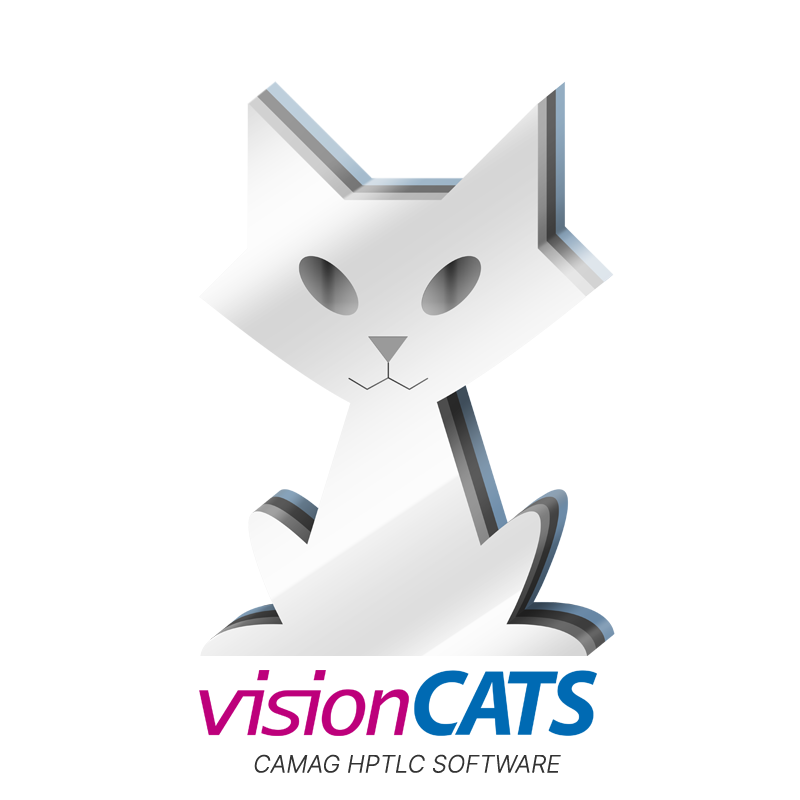
CAMAG® HPTLC Software visionCATS
CAMAG’s HPTLC Software visionCATS organizes the workflow of the HPTLC PRO analysis, controls the HPTLC PRO Modules, and manages all data evaluation.


CAMAG® Automatic TLC Sampler 4 (ATS 4)
Automatic sample application is a key factor for productivity of the HPTLC laboratory. The ATS 4 offers fully automatic sample application for qualitative and quantitative analyses as well as for preparative separations. It is suited for routine use and high sample throughput.
-
Fully automated sample application
-
Application of bands, spots or rectangles
-
Software-controlled by visionCATS


CAMAG® Linomat 5
With the Linomat 5 samples are sprayed onto TLC/HPTLC plates in the form of bands with nitrogen or compressed air. Application is automatic, only changing the syringe (filling, inserting and rinsing) is manual. The Linomat 5 is suitable for small sample throughput.
-
Semi-automatic application
-
Application of spots or bands
-
Data input through visionCATS software or keypad

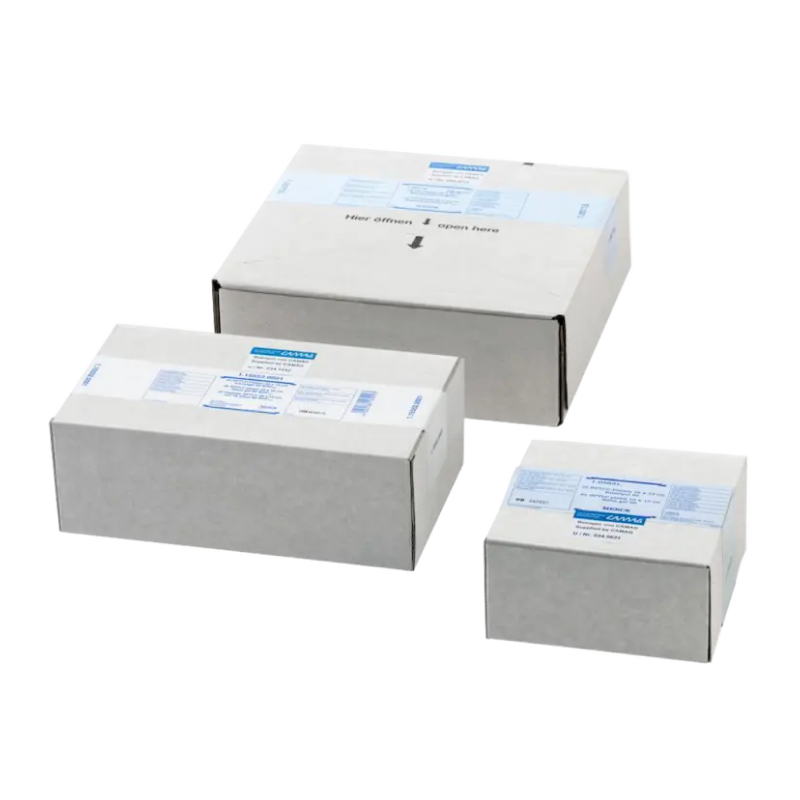
HPTLC Plates
In instrumental HPTLC pre-coated layers are used. HPTLC plates are available with different sorbent material on a support of glass or aluminum.
-
Pre-coated HPTLC plates on a support of glass or aluminum
-
Silica gel 60, Reversed-phase, Diol-, NH2-, CN-phase
-
Available with F254


Test Dye Mixtures
Test dye mixtures are useful for functional checks on individual steps in the TLC/HPTLC procedure and for studying the influence of specific parameters.

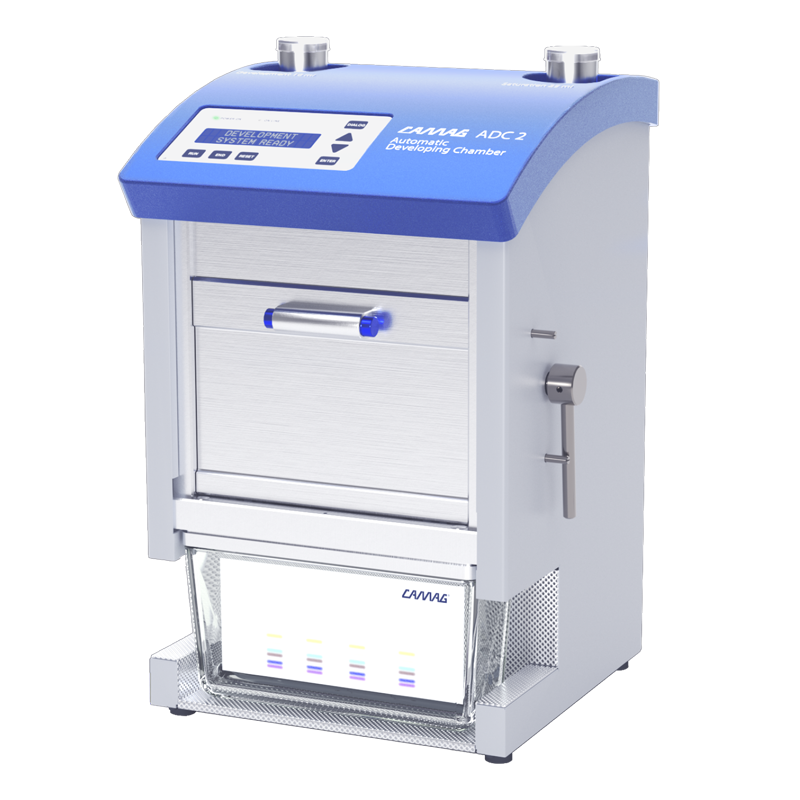
CAMAG® Automatic Developing Chamber 2 (ADC 2)
The ADC 2 offers convenience, safety, and reproducibility for isocratic developments of 20 x 10 cm HPTLC glass plates in full compliance with Ph. Eur. Chapter 2.8.25 and USP Chapter <203>.
-
Fully automated development
-
Development in 20 x 10 cm Twin Trough Chamber
-
Operation in stand-alone mode or software-controlled by visionCATS


CAMAG® AMD 2 System Automated Multiple Development
The AMD 2 is a software-controlled HPTLC chamber for gradient development. It is used for difficult separation problems that cannot be solved by isocratic HPTLC.
-
Multiple development
-
Stepwise gradient elution over increasing separation distances
-
Enhanced separation capacity


CAMAG® Derivatizer
The Derivatizer is used for automated reagent transfer in the derivatization of thin-layer chromatograms and sets a new standard of reproducibility by employing a unique “micro droplet” spraying technology (patented).
-
Unsurpassed homogeneous reagent distribution
-
Environmentally friendly and safe handling through a closed system
-
Low reagent consumption (2-4 mL)


CAMAG® TLC Plate Heater 3
The TLC Plate Heater 3 is a device for heating TLC/HPTLC plates, permitting the optimal heating during the derivatization reaction. It features a NEXTREMA® heating surface which is resistant to all common reagents and is easily cleaned.
-
For uniform heating of TLC/HPTLC plates
-
Temperature selectable between 25 and 200 °C
-
NEXTREMA® heating surface (resistant to all common reagents)


CAMAG® TLC Scanner 4
The TLC Scanner 4 is the most advanced workstation for densitometric evaluation of TLC/HPTLC chromatograms and other planar objects.
-
Measurement of reflection, either in absorbance and/or fluorescence
-
Spectral range from 190 to 900 nm
-
Data step resolution 25–200 μm


CAMAG® TLC Visualizer 3
The TLC Visualizer 3 is a high-end imaging and documentation system with superior performance in white light, long-wave UV (366 nm) and short-wave UV (254 nm) ensuring illumination with maximum homogeneity.
-
Maximum illumination homogeneity in white light, UV 366 nm and UV 254 nm
-
High-performance industrial camera with CMOS image sensor
-
Image-based evaluation


CAMAG® BioLuminizer® 2
The CAMAG® BioLuminizer® 2 is a compact and user-friendly documentation system for HPTLC plates. It captures images of light-emitting objects. With the help of luminescent bacteria, the presence of toxic substances in food and water samples can be monitored.
-
Cooled 16 bit CCD camera
-
Optimized plate compartment to keep bacteria moist
-
Small footprint


CAMAG® TLC MS-Interface 2
The TLC-MS Interface 2 enables users to directly analyze zones from TLC and HPTLC plates by Mass Spectrometry. A substance confirmation can be obtained in less than a minute.
-
Rapid and contamination-free elution of selected zones
-
Direct transfer to any mass spectrometer
-
Plug & play installation


CAMAG® HPTLC Software visionCATS
CAMAG’s HPTLC Software visionCATS organizes the workflow of the HPTLC PRO analysis, controls the HPTLC PRO Modules, and manages all data evaluation.
Interested in the product?
Reach out to your local distributor and enjoy faster, improved results at reduced costs.
